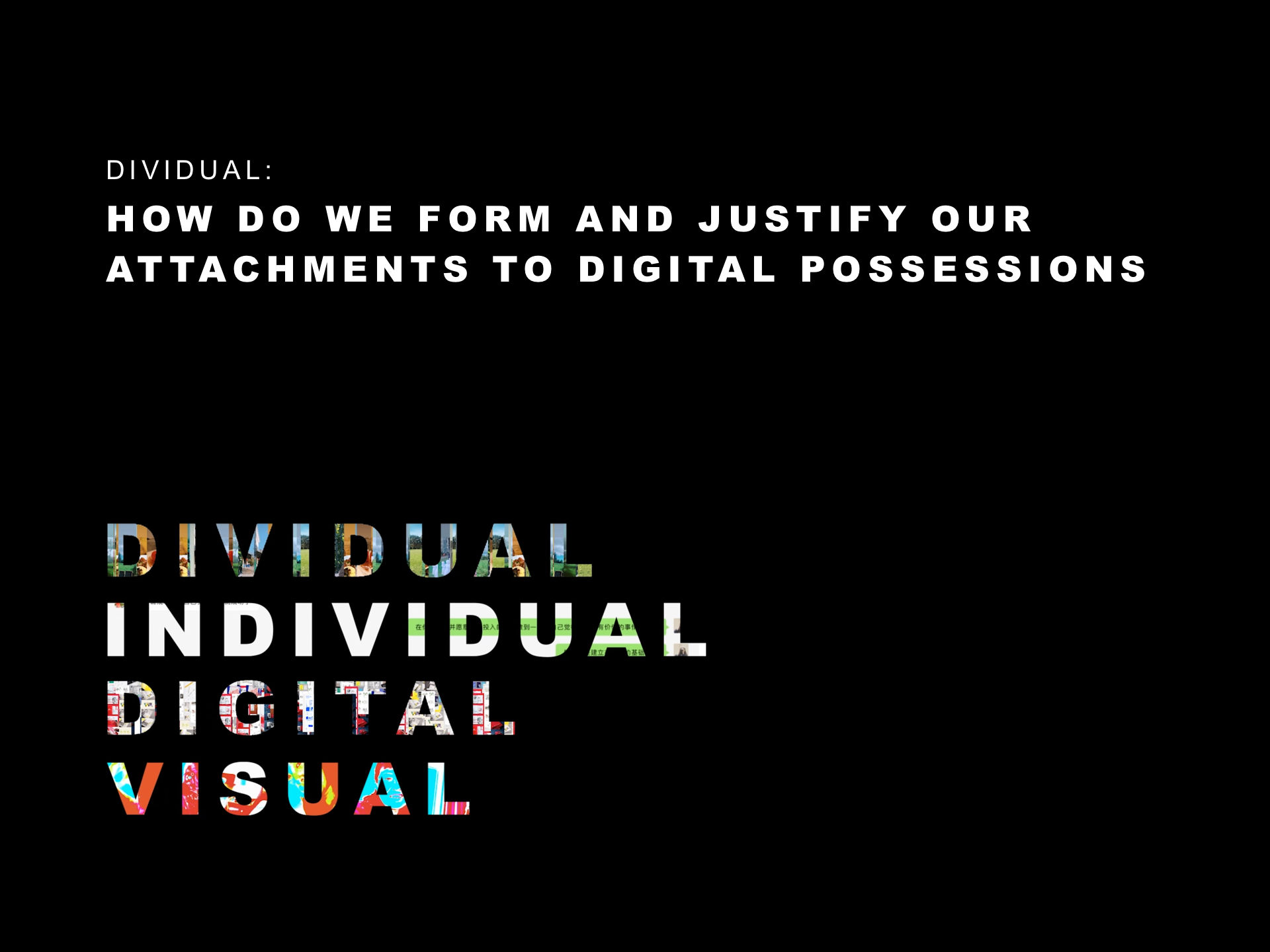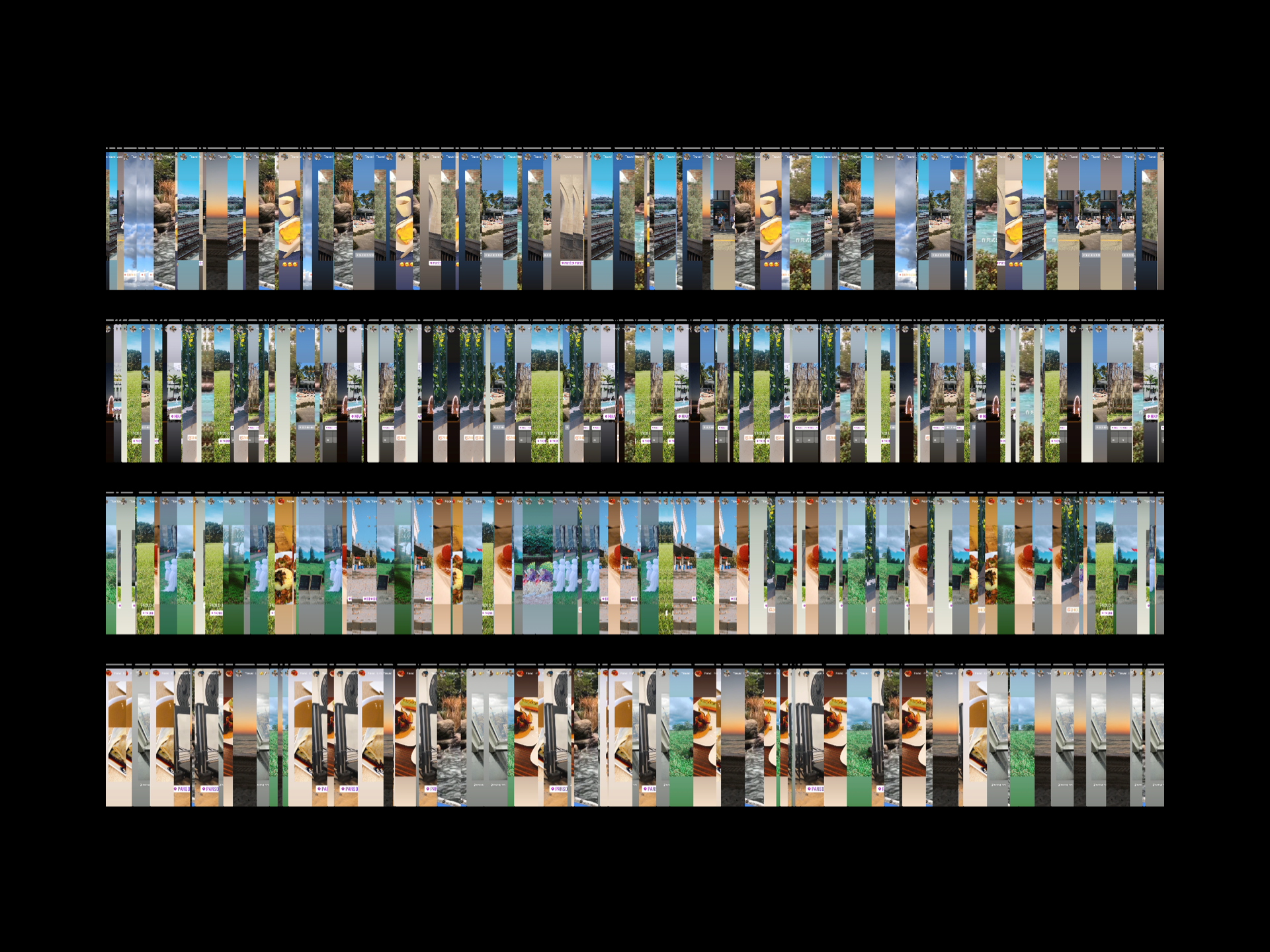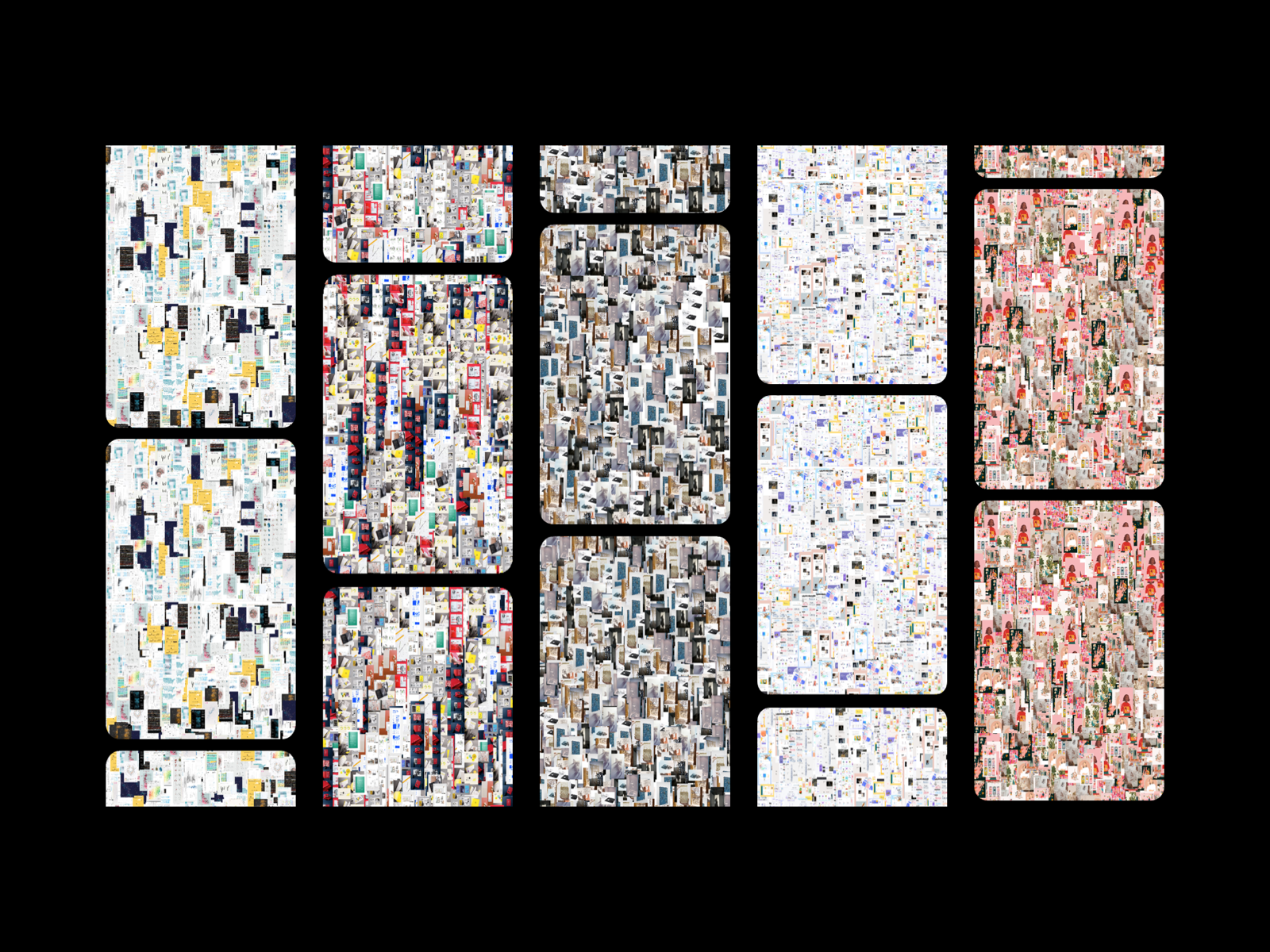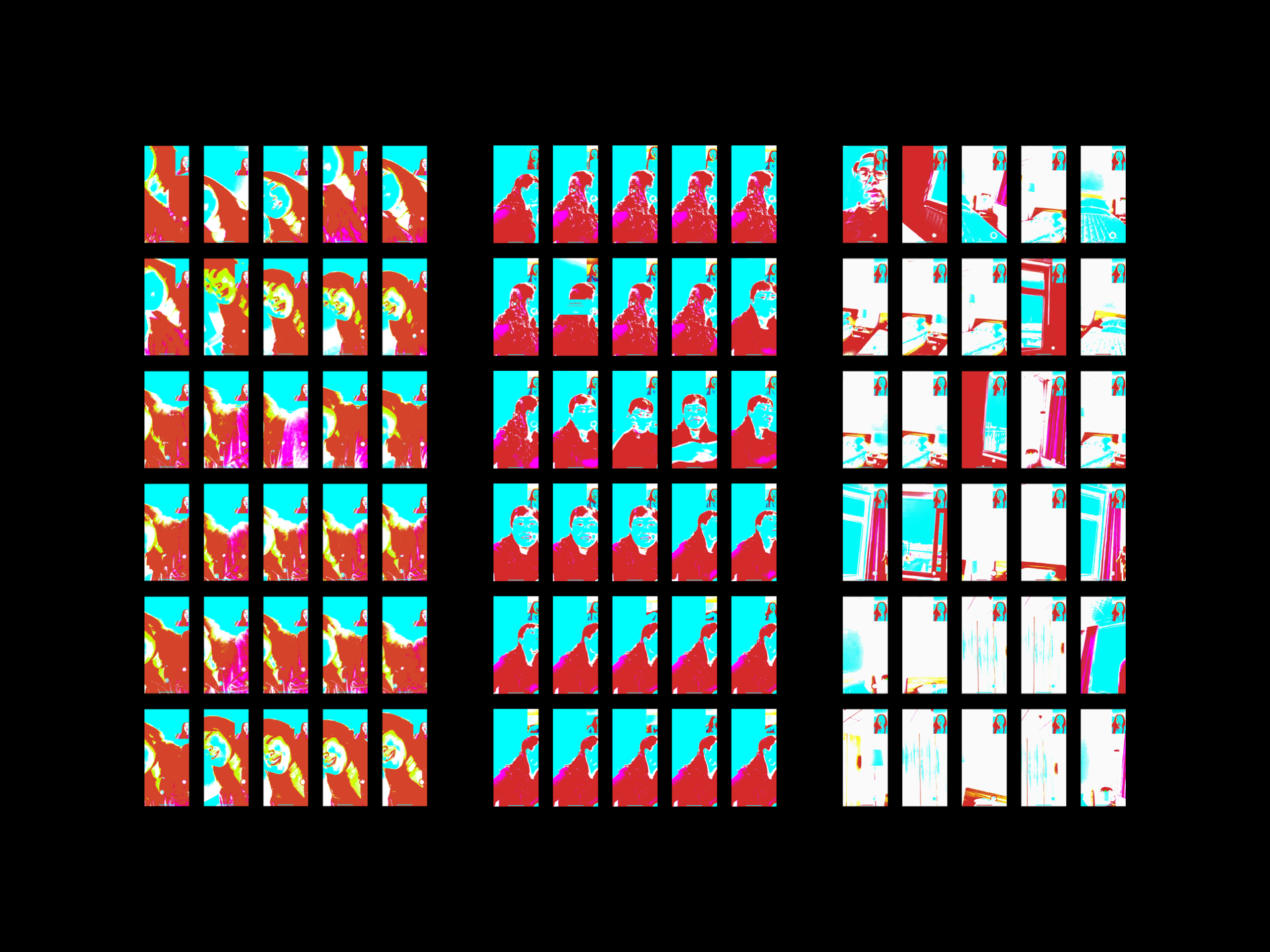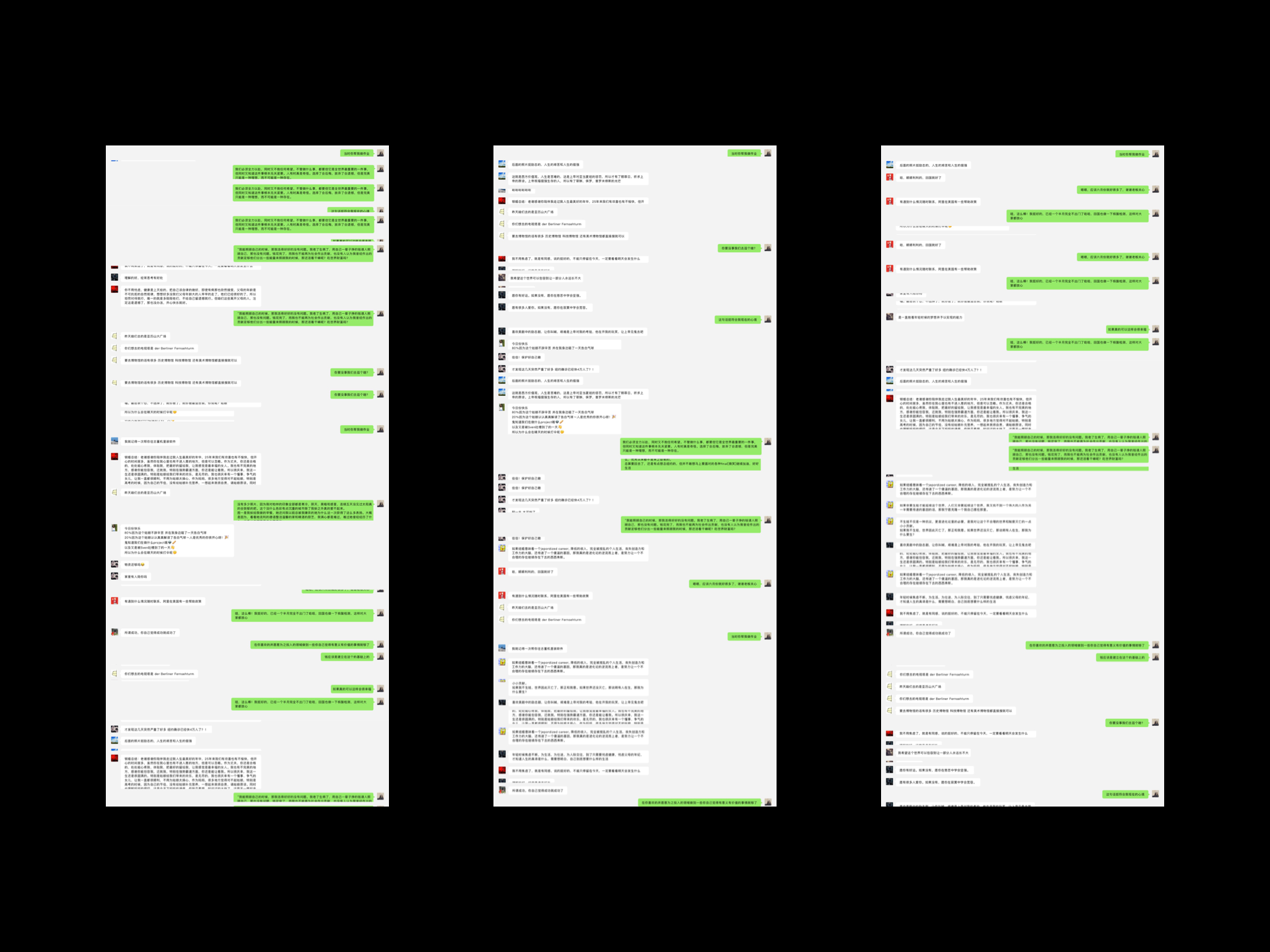Title
Dividual
Author
Jiawen Xie
Keywords
Digital Hoarding Behaviours
Interactive Data Visualization
Self-portrait
Abstract
Thesis Paper
Introduction
How do we form and justify our attachments to digital possessions?
Have you ever found that there are thousands of photos on your phone's album? How often will you look back at these photos? What happens when you change your phone? To be safe, resourceful, and reliable, collecting things gives us a lot of pleasure and contentment. Besides preserving the values of attributes and anticipating future usage, collecting is also a way for us to relive past events and express care. Objects have gradually become our extended-self that trace our life and make sense of our self-worth and identity.
The convenience of digital technology, huge storage capacity, and stable cloud support is fostering digital hoarding in many ways. In that case, how are people’s collecting behaviors changing? How does the digital world influence the meanings attached to the collections and the corresponding people's extended-self? How do we create and justify our attachments to digital possessions? Those are the questions I want to bring up to my audience through this project.

Digital Hoarding
What is digital hoarding?
The definition of hoarding is accumulating items beyond the point of usefulness, and it applies to both physical and digital elements. The hoarding issues happen in workplaces, households, and personal contexts, as well as the virtual worlds, including databases, videos, images, avatars, and digital documents. More serious is the anxiety of throwing things away or losing something might be valuable may lead to obsessive-compulsive disorder, which may have a significant impact on daily life.
However, on the other side, items and possessions are integral to emotional wellbeing. Kristen Schiele and Mine Ucok Hughes suggest in their research work “Possession Rituals of the Digital Consumer: a Study of Pinterest” that virtual possessions could also become part of the user’s extended self. This process is crucial to make sense of their self-worth and identity.
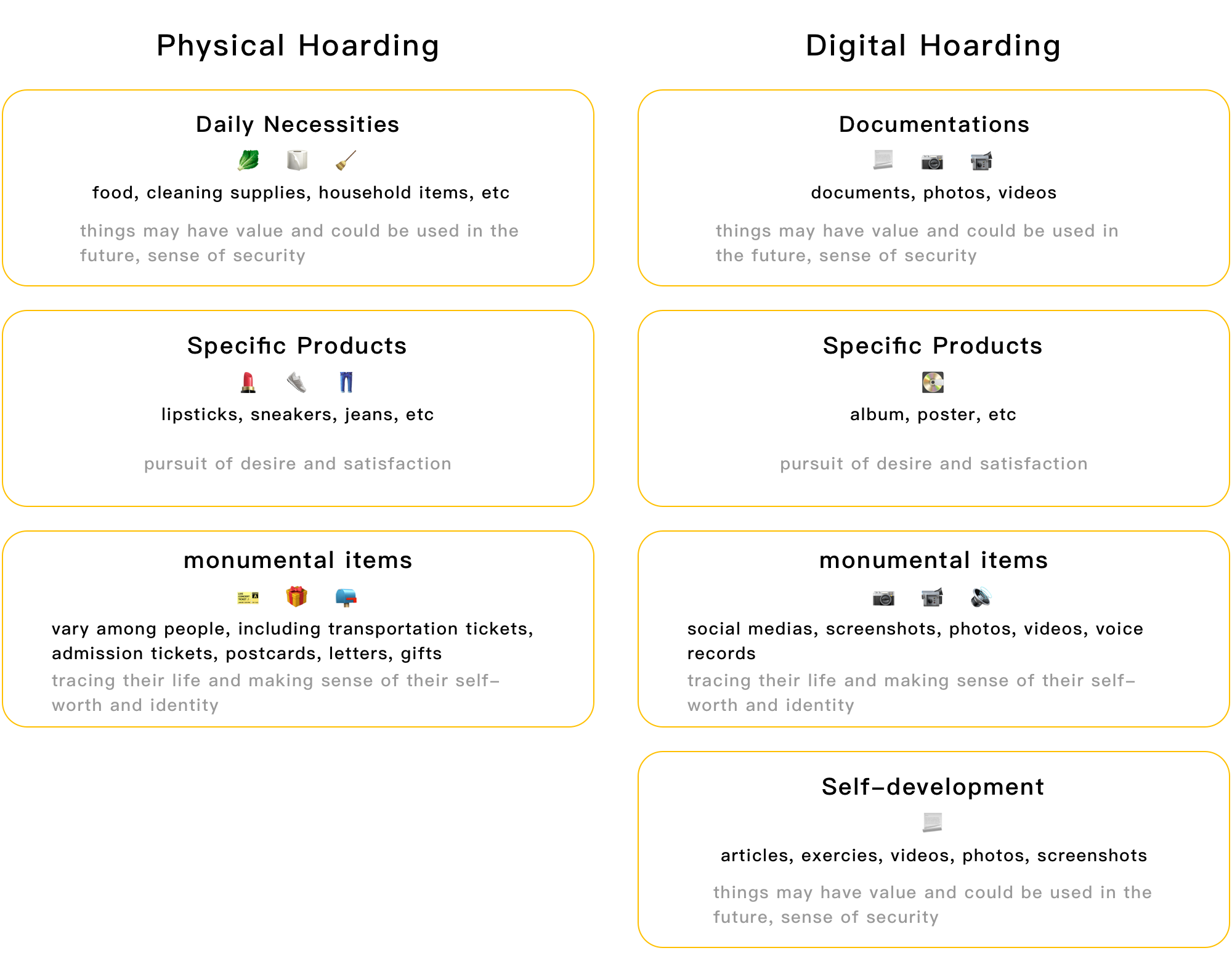
Psychological Research
Why we hoard? One reason is making sense of our self-worth and identity.
One manifestation of people’s emotional attachment to objects is hoarding behaviours. It refers to the emotional attachment generated by the memory represented by the item and the people involved. The level of emotional over-involvement is significantly higher among the individuals who hoard versus the non-hoarders. Care seeking and fear of losing are the two primary behaviours hoarders have toward objects, compared with the less effectiveness of making use of them.
Self-extension means that an individual’s concept of his or her own could extend out of the body and apply to material objects. An article published in American Society for Information Science and Technology(2013) indicated that digital possessions could be characterized as “providing evidence of the individual”, “representing the individual's identity”, “being recognized as having a value”, and “exhibiting a sense of bounded control.”
Precednt
Hoarding as a way to remember.
Waste Not is an installation by Song Dont that displays all of Dong's mother's belongings in different series and colours. Dong's mother lived in the generation that went through a lot of hardships and cultural revolution in China. In that era, the central value system "Waste Not" means everything should be saved for future usage so that all kinds of used items filled up her small house.
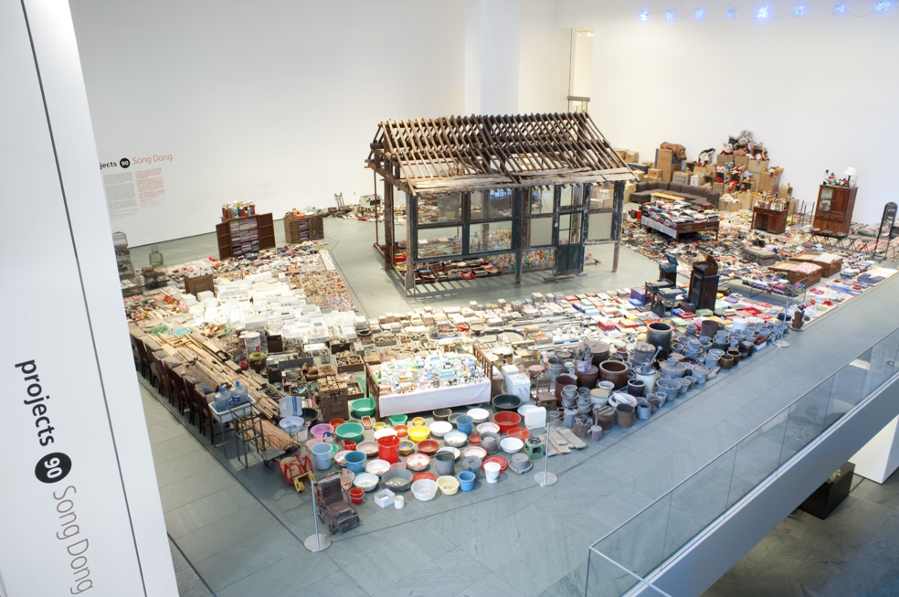
This project is a vivid example of how the social and cultural background influences people's hoarding behaviours. As an exhibition, it reflects the characteristics of a particular historical period and its impact on people. For the author himself, it reflects his impression and nostalgia for his mother through the collection of objects.
Hoarding as a way to remember.
牡蛎/the birth of Venus is a bionic machine that mimics the behaviours of oysters that produces pearls of different shapes based on the objects you put in. Guannan Chen designs it in the Central Academy of Fine Arts of China.

Guannan Chen pearlized her rings, keys, badges, brooches, all of which are meaningful to her. Guannan Chen suggested that "The Birth of Venus pearlized people's most private and memorable objects. They resonate emotionally with the wearer, creating pearl jewellery that is unique to everyone."
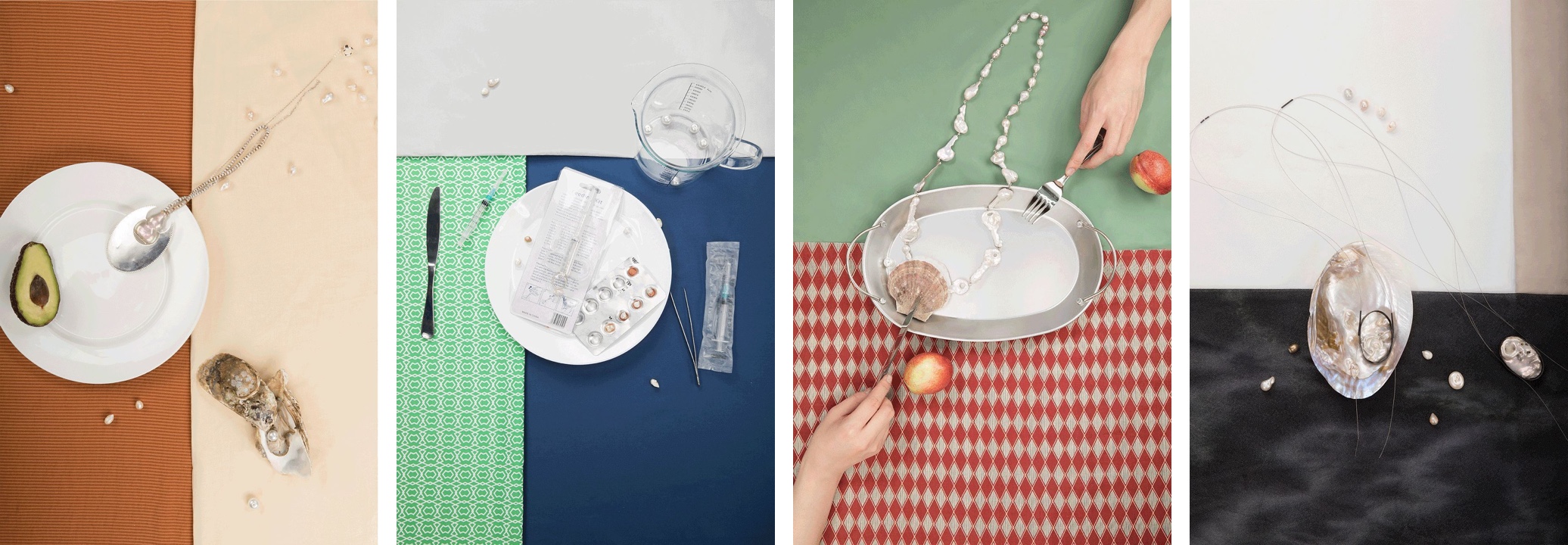
The Birth of Venus provides a creative ritual for people to treasure their objects and turn the emotional relationship between object and human beings into a physical representation. It allows people to rethink what they value, how do they preserve objects, and what makes the most sense for them. It is also a discussion between rebirth and eternity.
Target Audience and Research
People have more emotional attachment to physical items versus digital possessions
I choose the age group between 24 to 55 as my target audience. They are a generation that has experienced the development of science and technology. They have undergone a digital transformation, so their collecting behaviours are likely to change accordingly. Through my project, I want to raise a discussion among my audience about how collecting behaviours are being transformed in the digital age, and let them think about how these behaviours influence the meanings attached to the collections.
In order to better understand the collecting and hoarding behaviors, I interviewed 20 individuals between 24 to 55 about their collecting habits, reviewing behaviors and motivations:
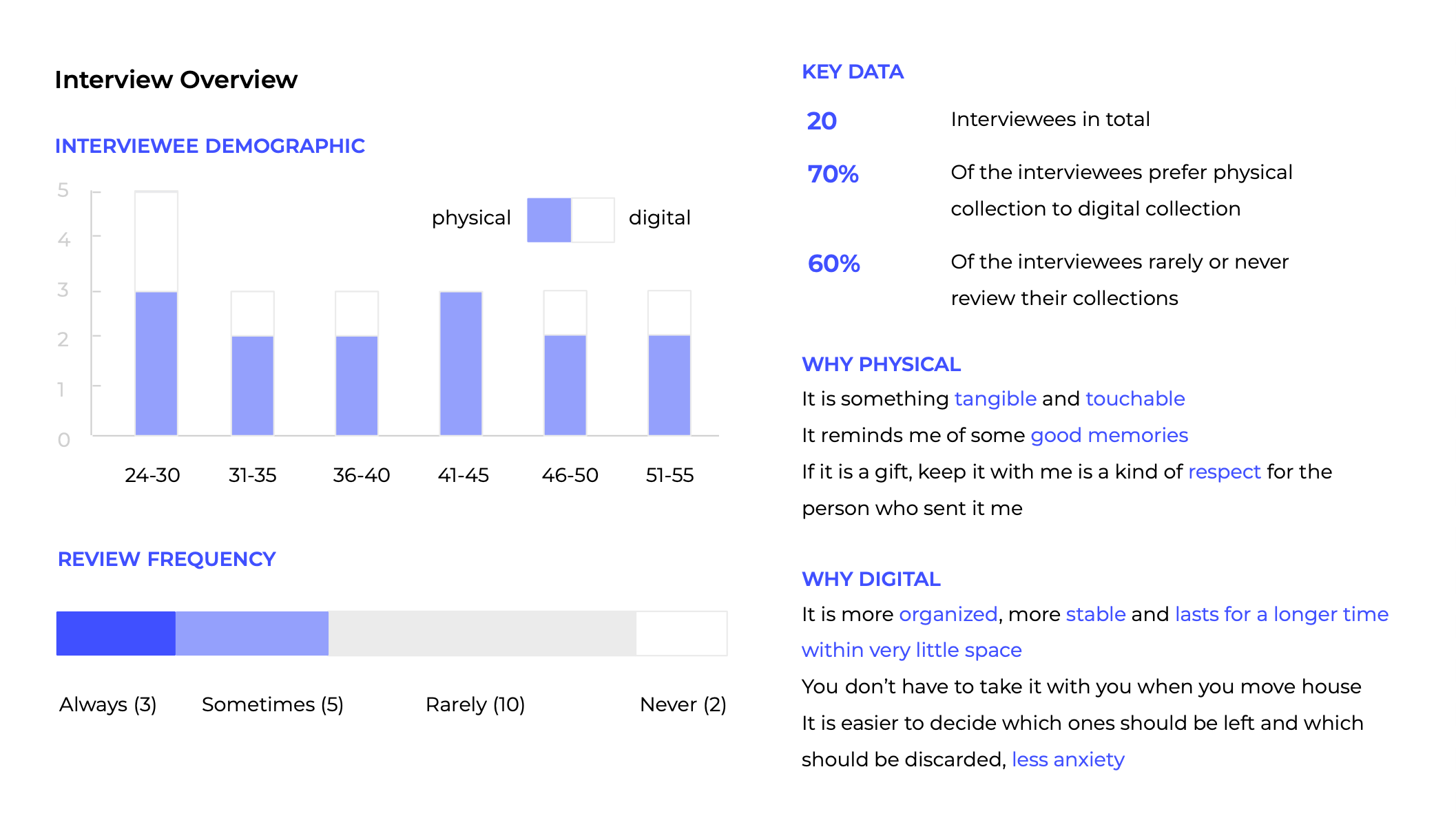
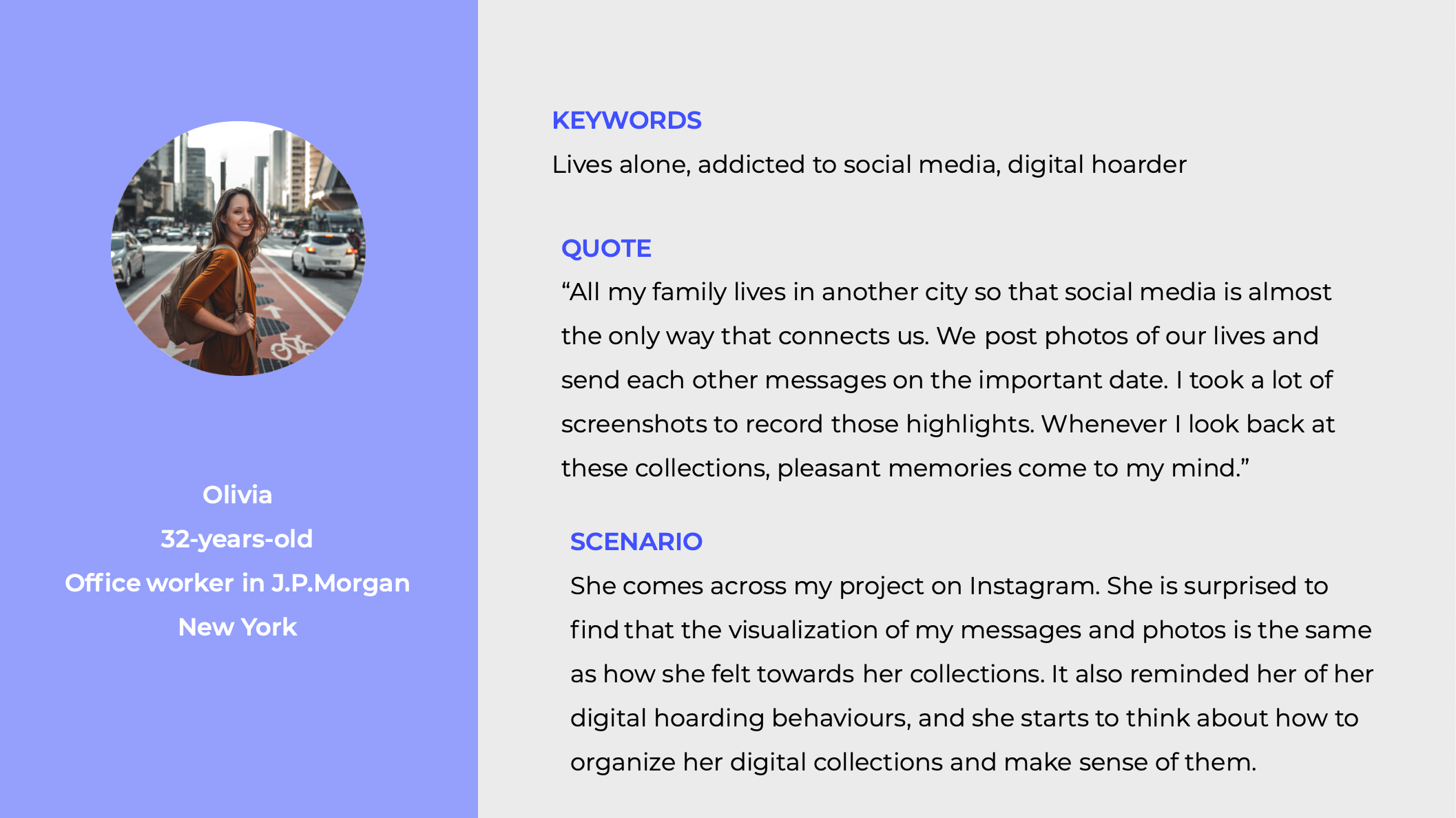
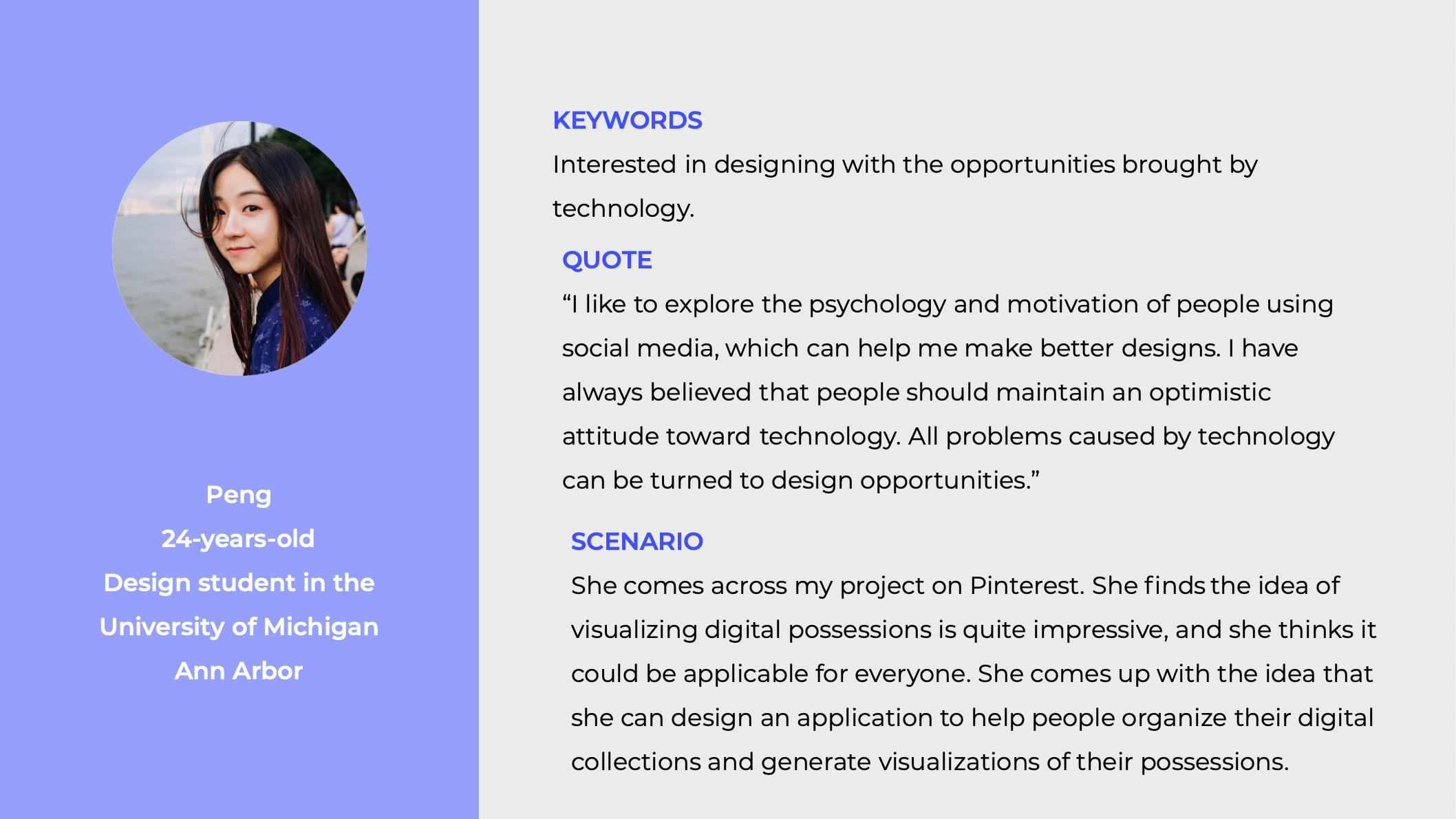
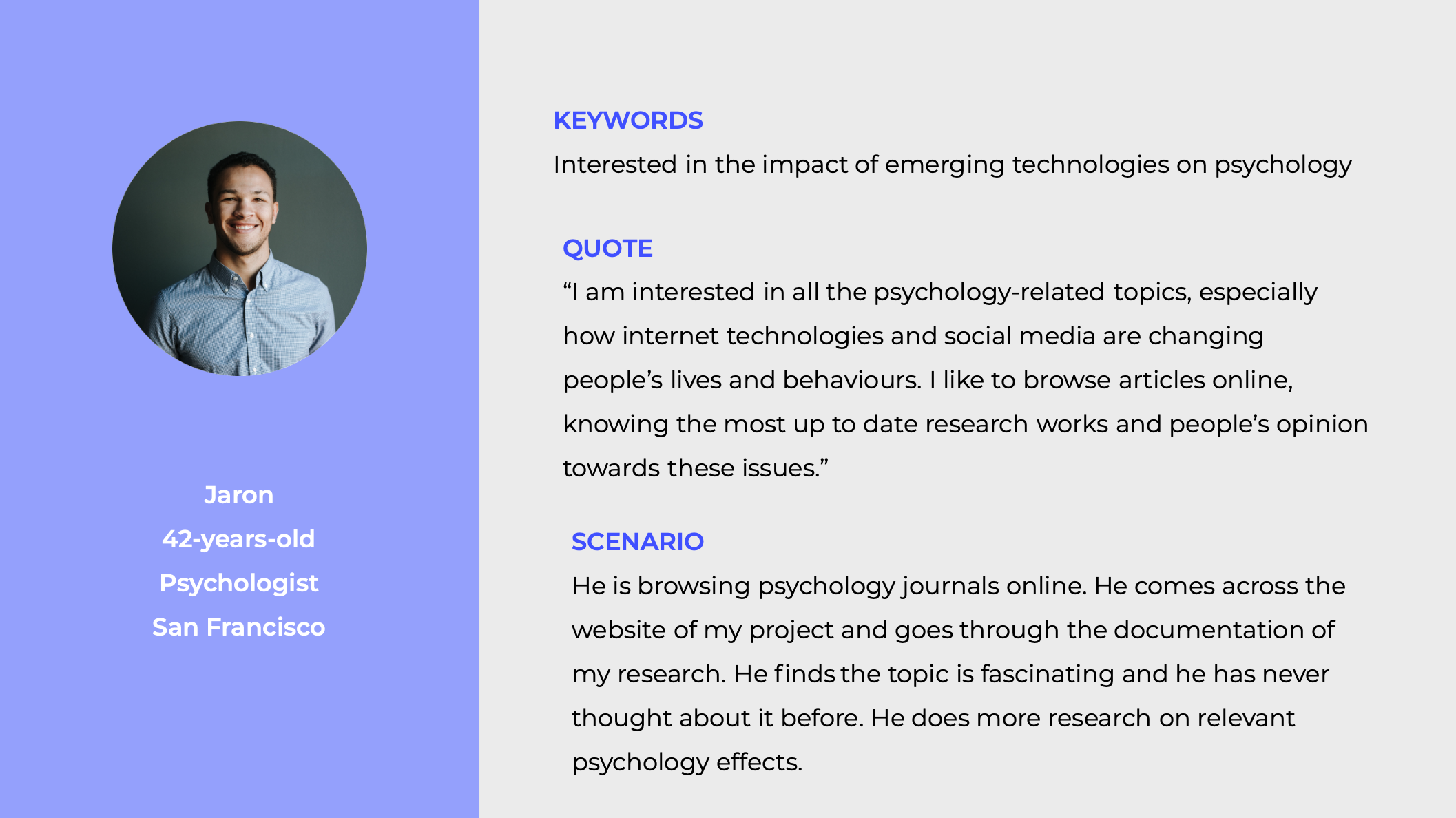
Concept Statement
How do we form and justify our attachments to digital possessions?
My thesis explores how technologies are transforming our collecting behaviors in a personal context and discusses the massive and ephemeral digital collections that bring us more anxiety or contentment.
With the prevalence of digital media, collecting practices we are gradually changing from physical items to digital possessions. Huge storage capacity and easy storage methods provide more convenience for the collections of photographs, videos, and audios. Both physical and virtual properties have become an integral part of the user's extended self and emotional well-being. However, people tend to perform more emotional attachment to material items because they regard physical things as carrying memories. Besides, they seldom look back to their large and disorganized digital properties. With everything gradually digitized, how do we form and justify our attachments to digital possessions? That is the question I want to bring up to my audience.
Design Implementation
Dividual
Dividual an interactive website that I designed to bring up this issue. I chose four mobile applications in different aspects: Album, Instagram, Pinterest, and WeChat to visualize. My audience would be the people between 24 to 55, which is the most active age group in digital media. They may access my website online, interact with the visualization, and go through the related research work. Through this experience, they may think about how their hoarding behaviors change by digital technology and about how their attachment to their digital possessions.

